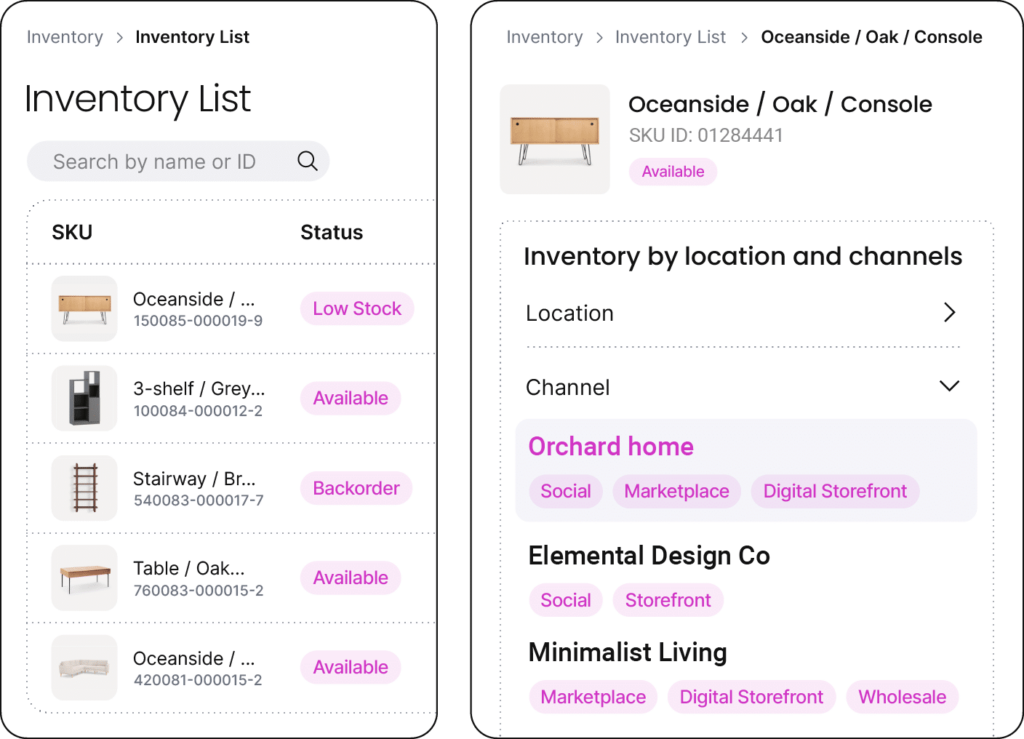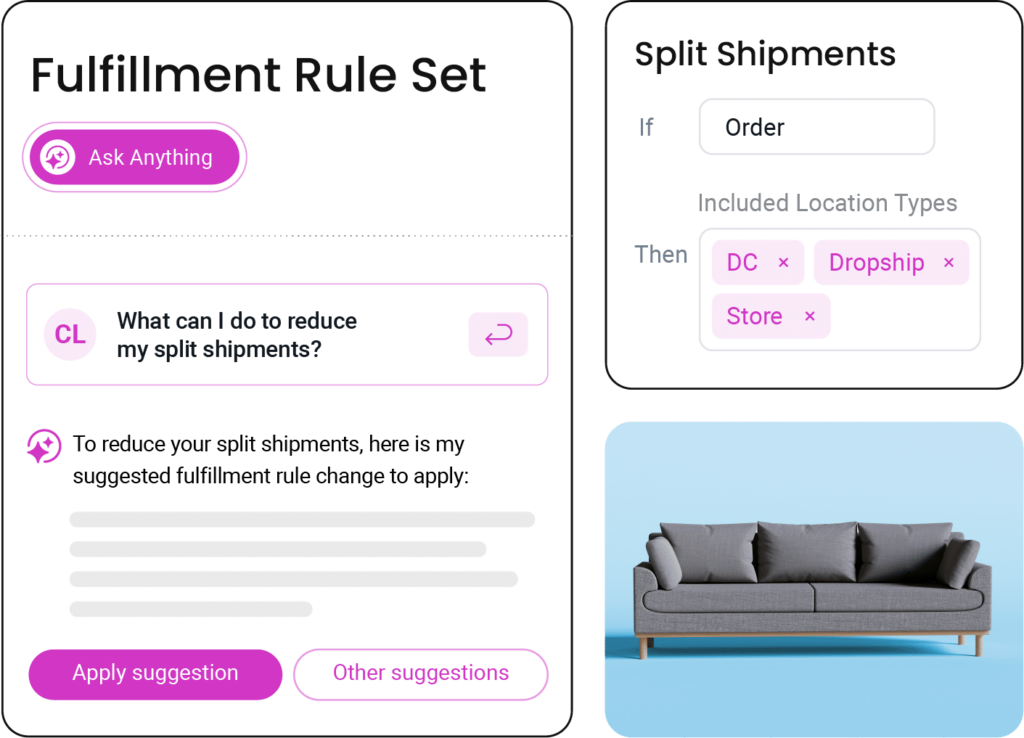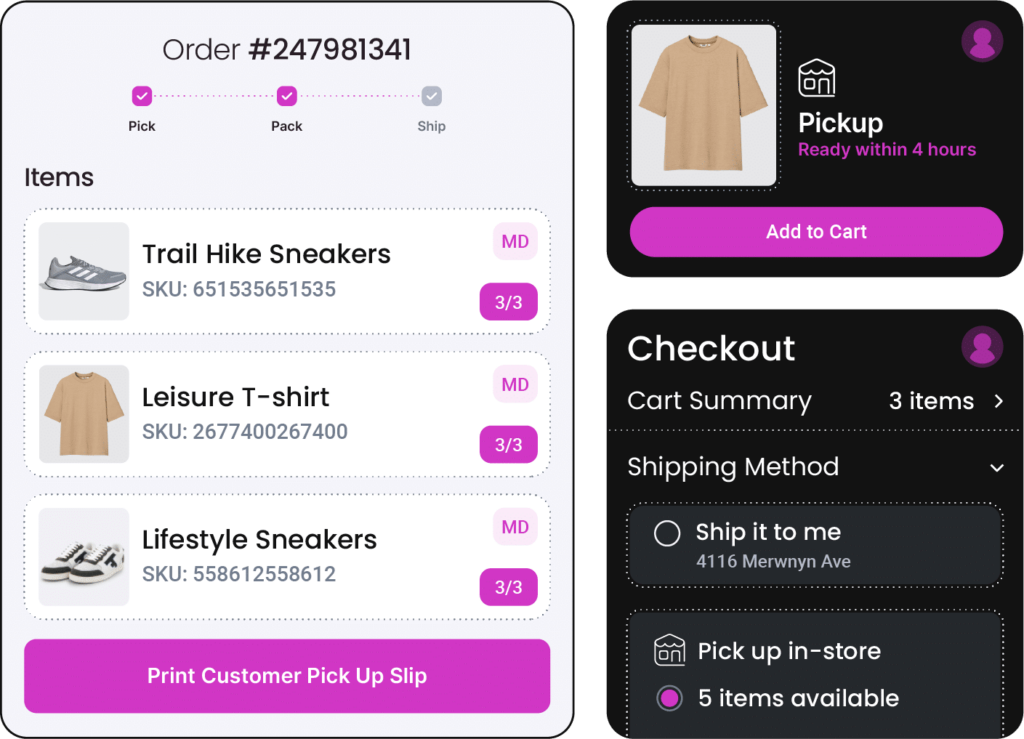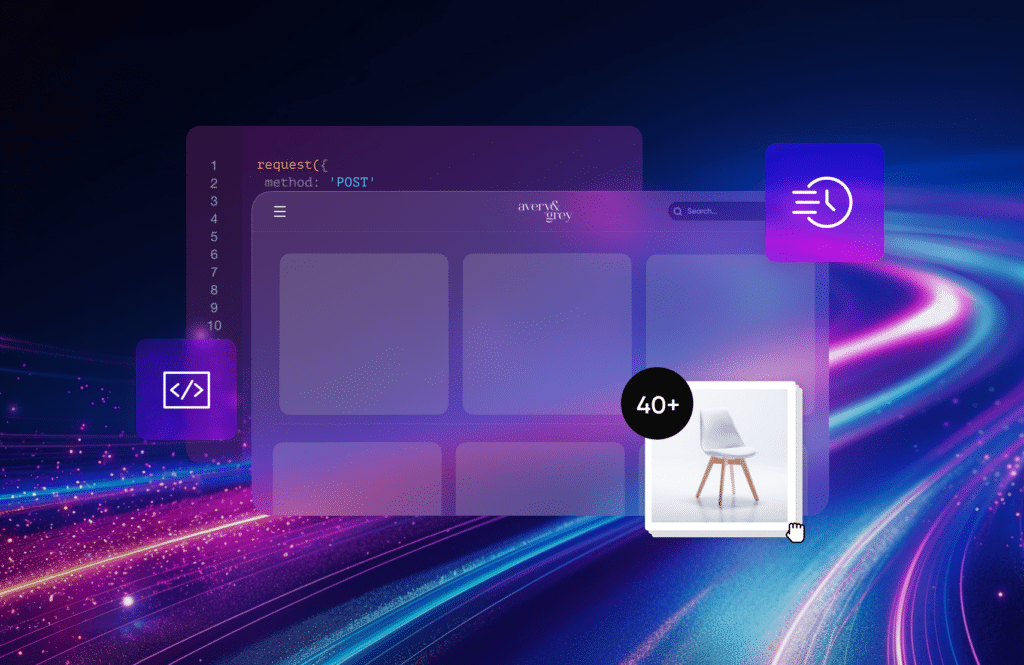- Unified, real-time view of inventory
- Al-assisted inventory allocation & order fulfillment
- Flexible store fulfillment services
- Automated customer service tools
Orchestrate the order lifecycle with an AI-powered OMS

A reimagined, AI-first OMS to seamlessly connect demand and fulfillment

Increase conversion with real-time inventory delivered anywhere
Say goodbye to inventory visibility gaps. From physical stores to distribution centers—get a single view to track and allocate stock efficiently across multiple brands. And wherever your customer shops, they’ll always know what’s available.
Minimize split shipments with smart order fulfillment
Writing custom code for order fulfillment are for the legacy systems of yesterday. Now you can fulfill from the optimal location with a configurable, AI interface. Automate order tracking, returns, and exchanges across any demand channel.


Improve sell through with a suite of store fulfillment services
With inventory spread across multiple locations, it’s easy to run into poor allocation. Instead, offer Buy Online, Pick Up in Store or Ship from Store to maximize inventory availability. With fabric’s store fulfillment app, easily pick and pack in real-time.
Integrate fast across systems to run your commerce business
We get it, integrations are a headache. Plug in fast with social channels, marketplaces, fulfillment carriers, and back office providers—all without relying on your IT teams.




